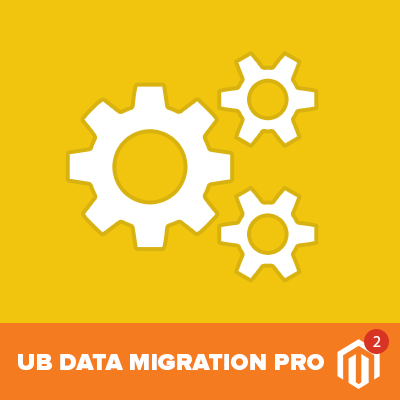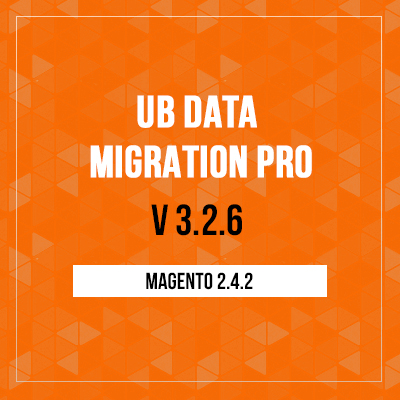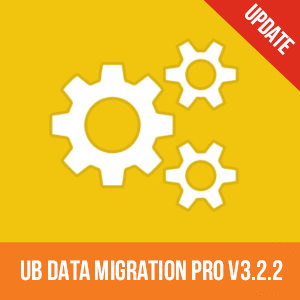For anyone familiar with Magento 1, it’s quite common that a configurable product is one of the most popular product types and powerful when you sell complex products with multiple attributes.
However, it can be quite daunting migrating configurable products from Magento 1 to Magento 2 since Magento 1 provides fairly extensive pricing options, such as Special Price, Tier Price, and Cost. That’s why we received many questions like “does the migration tool migrate configurable products attached to the correct simple products and attribute sets?”.
In this article, we will try to cover the main differences of Configurable Products in Magento 1 versus Magento 2 and how our UB Data Migration Pro module helps to migrate all Configurable Products from Magento 1 to Magento 2 automatically. Before we dig deeper, let’s talk briefly about what simple products versus configurable products are.
Simple Products versus Configurable Products in Magento
A simple product in Magento is a physical item with a single SKU, its own unique URL, and its own inventory count that is shipped to a customer. Intangible products like services (such as a business review, downloadable music, or an e-book) do not count as simple products. Simple products have a variety of pricing and of input controls which makes it possible to sell individually, or as part of a grouped, bundle, and configurable products.
A configurable product in Magento differs from a simple product in that a configurable product acts as the ‘parent’ product which provides the customer with lists of options for each variation. Each option ultimately reduces down to a simple product choice which is stored as a simple product with a distinct SKU.

Sample configurable product -- UB Trex Pro theme
For example, you use Configurable Products to sell clothing items and let the customer choose proper color and size during the purchase process. If you sold a T-shirt that was available in 2 colors and 3 sizes, there would be 6 simple products beneath the main configurable product to cover every possible combination of variations. You can specify different prices for some or all of the configurable options in that T-shirt configuration product and know precisely when each variation runs out of stock.
How Magento 1 versus Magento 2 handles Configurable Products?
Both Magento 1 and Magento 2 support configurable products as one of the most popular product types. However, when switching from Magento 1 to Magento 2, you might have noticed that many settings were updated including configurable product prices. All these differences need to be well handled when migrating to Magento 2 to ensure the data integrity of configurable products. Let’s take a closer look at the differences that you need to take into consideration.
Configurable Product Price Calculation
When creating a configurable product in Magento 1, the price you set for the parent product will become the base price of all the associated simple products. This means the simple product prices were completely ignored.
If you want to sell a configurable product with different simple product prices (eg. a simple product which has the price $50 and a simple product B which has the price of $80), Magento 1 allows to do so with the help of the Super Product Attributes configuration. From this Super Product Attributes Configuration menu, you can specify the price adjustment of any specific associated simple products. You can add price variations to specific attribute values and these variations can add or subtract from the parent product price.

Super Product Attributes configuration in Magento 1 -- Specify the adjustment in relation to the price of the configurable product as a fixed value or percentage.
In Magento 2, it completely re-designed product edit form and substituted the Super Product Attributes configuration menu. And you need to use Configuration instead of Associated Products to assign all associated products to a parent product. Now each simple ‘child’ product has its price which is shown on the frontend for the customer to choose as one of the options of a configurable product. For this reason, the configurable product pricing is ignored while the simple product price is taken into consideration in Magento 2.
If you take a closer look at the database structure, you will see that Magento 2 removed the catalog_product_super_attribute_pricing table which was used in Magento 1 to store all variation prices.
All these changes are worth highlighting when you switch to Magento 2.
Special Price
A Special Price is actually a discounted price (instead of the regular price) that can be offered for a designated period of time. Both Magento 1 and Magento 2 support assigning a special price to multiple products, such as multiple variations of a configurable product.
When a special price is available in Magento 1, the retail price is crossed out and the special price appears in large, bold text like this sample:

Special price of a Configurable Product
In Magento 1, you can set both Base price and Special price right in the Configurable Product. However, in Magento 2, you have to assign the Special Price to any simple products (not the ‘parent’ Configurable Product) that are associated as variations of the configurable product that you want to include.

Special price configuration of a Configurable Product in Magento 1
This means that there should be a way to map and convert the Special Price of a configurable product when migrating from Magento 1 to Magento 2.
Group Price and Tier Price
In Magento 1, you are familiar with the traditional Prices tab that includes the Group Price where you can set up promotional prices for specific customer groups within the selected website.

Group Price in Magento 1
In Magento 2, however, the Group Price option has disappeared and been substituted by the Advanced Pricing page. If the Group Price function is no longer there, how can we transfer the old Group Price in Magento 1 to Magento 2?
The good news is that since Magento 2 group price intersects with Tier Price, we can use the Tier Price to set quantity discounts to a member of a specific customer group. That said, our migration module takes advantage of this implementation to automatically convert the old Magento 1 Group Price to Magento 2 Tier Price. And this approach works well for all our users so far.
Automatically convert all pricing options of the Configurable Products
If you plan to migrate your data from the Magento 1 to the Magento 2, our UB Data Migration module does all the heavy lifting and automatically migrates all the pricing options of the Configurable Products including the Group Price, Special Price, and variation price data for you.
The following example shows how the module helps to automatically convert and migrate a configurable product with both Special Price and variation price to Magento 2.
Magento 1 -- Before data migration:

Sample ‘Black Nolita Cami’ product — Variation Price Configuration

Sample ‘Black Nolita Cami’ product -- Special Price

Sample ‘Black Nolita Cami’ product on the Magento 1 frontend
Magento 2 -- After data migration:

Sample ‘Black Nolita Cami’ product on the Magento 2 backend

Sample ‘Black Nolita Cami’ product on the Magento 2 frontend
Conclusion
That’s it! At this point you’ll be able to foresee the extensive pricing options of the Configurable Products that your Magento 1 store might be associated with. If you plan to migrate your Configurable products from the Magento 1 to the Magento 2, moving forward with our UB Data Migration Pro will save you tons of time.
If you are new to our UB Data Migration Pro module, it’s a good idea to take a quick look at a brief tutorial video here to get a feel for how the module works.


